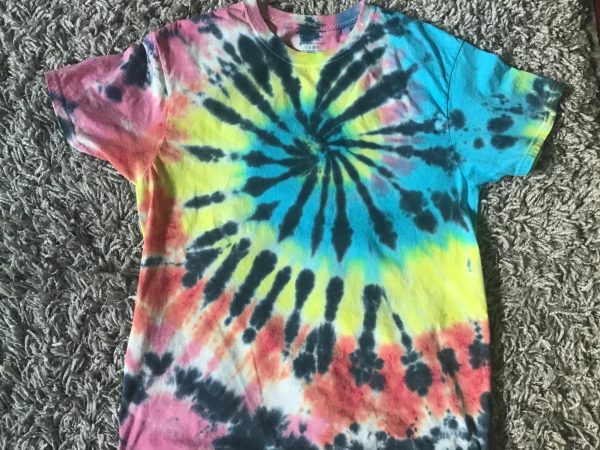The World’s Coolest Light Show is Underwater
February 5, 2023
and looking at Christmas light displays. In all the years that we’ve had this tradition, I’ve seen
some pretty special displays- lights at botanic gardens, traditional light shows with dazzling
white lights, and even synchronized light shows where displays “dance” to Christmas tunes. But
my favorite light show that I saw this year wasn’t a Christmas display. It was a light show that I
saw on TV. It was through an episode of a National Geographic show called Welcome to Earth
that I saw a stellar light show produced entirely by marine life- and was introduced to the
fascinating concept of bioluminescence.
created by energy released from chemical reactions inside or ejected from an organism. In
order to have this chemical reaction, a species must have luciferin. Luciferin is a molecule that,
upon reaction with oxygen, produces light. Different types of luciferin exist, but they vary
depending on the animal that hosts the reaction. Along with luciferin, species that have the
ability to create light can also produce a catalyst called luciferase, which can help to speed up the
reactions that occur in bioluminescent organisms. Scientists do not exactly know why every
animal who has this amazing feature uses it, but bioluminescence is often used to alert or
escape from predators, attract prey, and communicate with other creatures of the same
species.
Which animals make the light that comes with bioluminescence? Bioluminescence is
found in a variety of marine organisms, such as bacteria, worms, jellyfish, algae, crustaceans,
starfish, fish, and sharks (and that doesn’t complete the list). Many deep sea dwellers are
bioluminescent, but even sea creatures living closer to the surface have this unique feature-
such as differing species of plankton. Many above-surface creatures have this ability too, like
fireflies and mushrooms.
Bioluminescence can be visible through a variety of different colors emitted by animals.
Most of the bioluminescence produced in the ocean is bluish-green. This is because these colors
have shorter light wavelengths, and shorter wavelengths can be seen in and travel through both
shallow and deep water. Light that travels in longer wavelengths from the sun, like red light,
doesn’t reach the deeper parts of the ocean. This is why many sea creatures are red- it makes
them nearly invisible to predators, and many sea animals are now incapable of seeing red light.
Some of the most popular locations to witness these unique displays of light include San
Juan Island in Washington and Manialtepec Lagoon in Mexico. And some forms of
bioluminescence can be found above water too- such as at Waitomo Caves in New Zealand
where glow worms light the caves or at Great Smoky Mountains National Park, where fireflies
are the star of the bioluminescence show. Seeing a light show produced entirely by organisms
and animals has now become something on my personal bucket list- has it been added to your
list, too?
Image Source:
- https://hakaimagazine.com/features/secret-history-bioluminescence/
Sources:
US Department of Commerce, N.O.and A.A. (2010) What is bioluminescence?, NOAA’s National Ocean Service. Available at: https://oceanservice.noaa.gov/facts/biolum.html#:~:text=Bioluminescence%20is%20the%20prod
uction%20and,surface%20to%20the%20deep%20seafloor. (Accessed: January 31, 2023).
Team, T.O.P. (2018) Bioluminescence, Smithsonian Ocean. Available at: https://ocean.si.edu/ocean-
life/fish/bioluminescence (Accessed: January 31, 2023).
Freeman, B. and Begley Bloom, L. (2022) Best places to see bioluminescence in 2022, Lonely Planet.
Available at: https://www.lonelyplanet.com/articles/best-places-to-see-bioluminescence
(Accessed: January 31, 2023).









